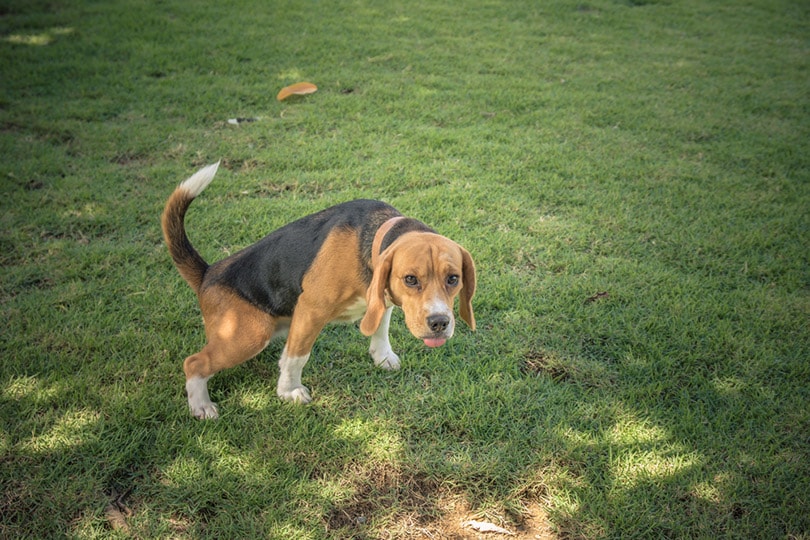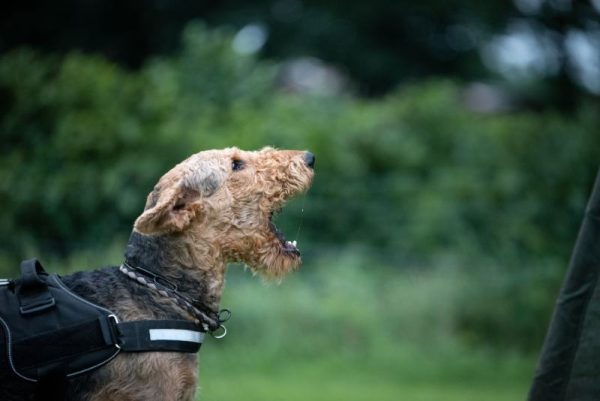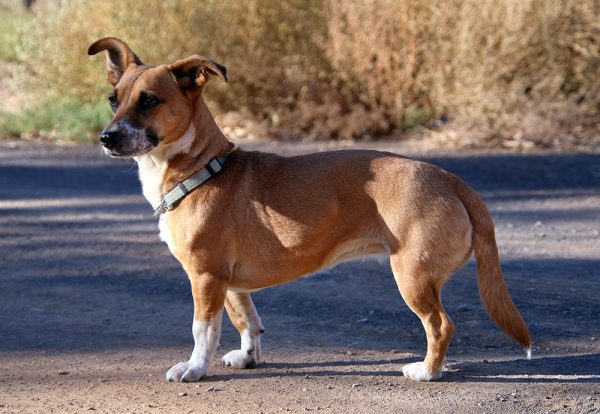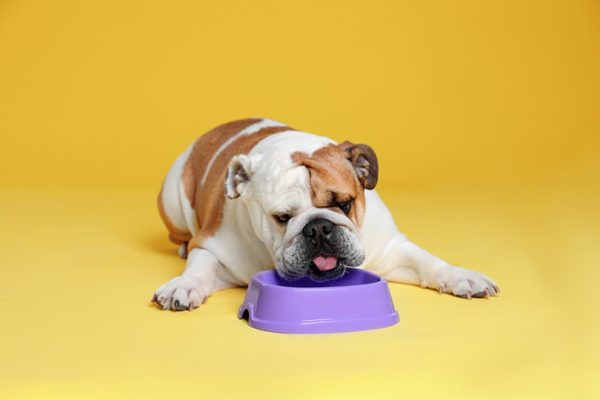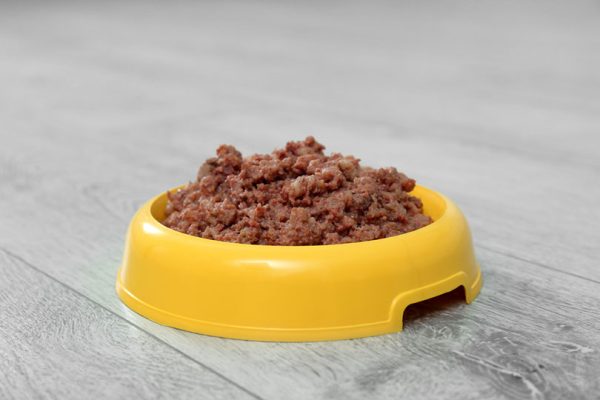In this article
View 2 More +If you’re a dog parent and the proud owner of a beautifully kept lawn, you’ve no doubt experienced the frustration of finding parts of it damaged by dog pee. This is a normal phenomenon, but are you forever doomed to a patchy, urine-spotted lawn?
Unless your dog never pees on the lawn, it’s unlikely that you can permanently banish dog pee damage. You can take some steps to reduce the damage, though, and regrow grass in dead areas. In this post, we will explain why dog pee kills grass and share some tips for keeping your lawn as green as possible. Dog pee kills grass because it contains nitrogen. Keep reading to learn more!

Why Does Dog Pee Kill Grass?
The reason dog pee kills grass is that it contains nitrogen. Nitrogen can kill grass, as you’ll know all too well if you’ve ever over-fertilized your lawn. So, if you’ve been finding discolored, unsightly patches on your lawn, nitrates and other salts in your dog’s urine are the culprits.
The effects of dog pee on your lawn can be worsened if you use lawn fertilizer. This is because fertilizer also contains nitrogen, so, coupled with dog urine, it can cause a bit of a nitrogen overload. This can, over time, result in large, crater-like brown or yellow patches in the areas your dog frequently pees.

How Can I Fix Dog Pee Patches on My Lawn?
You can’t repair grass that has already been damaged, but you can certainly replace it. To fix a dog pee spot on your lawn, completely remove the dead grass and water the area well. This helps to clear the area of the nitrates and salts that killed the grass in the first place. Finally, sprinkle new grass seeds over the patch and wait for nature to work.
Products to consider equipping yourself with the fight against urine patches are dog pee-resistant grass seeds like fescue and perennial ryegrass, plus lawn treatments. Lawn treatment products help to flush the area of the chemicals that cause the damage.
The 5 Ways You Can Prevent Dog Pee Patches on Your Lawn
When dealing with dog urine spots, prevention is the best policy. Here are some tips for keeping your lawn lush and green.
1. Hydrate Your Dog
Make sure your dog is drinking plenty of water. As well as being massively important for their health, it also helps to dilute the nitrogen in their urine. This is a simple way to minimize the damage to your lawn. Try providing several fresh, clean water bowls in different areas to encourage your dog to drink more.

2. Train Your Dog
Training is your most useful weapon in the battle against unsightly pee spots. If you usually give your dog free rein to pee anywhere, try encouraging them to pee in specific areas instead. Go for a non-grassy area or, if all else fails, an area where the damage isn’t obvious.
You might want to consider a pee post, a training aid that encourages dogs to pee on it rather than on your lawn. This is especially useful if you have a male dog, as males cock their legs up to pee.
Does your dog pee inside, too?
No matter how hard you try, pets will always leave you cleaning up smells, stains, vomit, hair, and everything in between. With the Hepper Advanced Bio-Enzyme Pet Stain & Odor Eliminator Spray, you can advance your clean-up routine!
- ADVANCED ENZYMATIC CLEANER - Penetrates the most stubborn smells and stains at the deepest molecular...
- FOR ANY MESS, ON ANY SURFACE - This pet odor eliminator cleans your carpets, floors, furniture,...
- FRESH, NATURAL ODOR - Our unique formulation doesn't rely on dangerous or unpleasant chemical...
It permanently removes the very worst pet stains and smells (and truly makes clean-up a breeze). Click here to learn more, order a bottle, and freshen up your home today.
At Dogster, we’ve admired Hepper for many years, and decided to take a controlling ownership interest so that we could benefit from the outstanding products of this cool pet company!
3. Walk Your Dog Early
Urine is most concentrated in the morning, so try walking your dog early. This way, they can get rid of their urine when it’s most concentrated, which may help reduce the damage to your lawn. Bonus point—dogs are often thirsty after walks so, hopefully, when you get home, your dog will lap up plenty of water that will dilute their pee.

4. Water the Area
If you see your dog peeing on your lawn, grab a watering can and water the area immediately afterward. This will help to dilute the urine and minimize the damage.
5. Fertilize Less
If your dog has chosen a specific area of lawn to frequent, avoid using fertilizer on that area. As fertilizer contains nitrates too, adding more will only worsen the situation. It’s better to clear out and regrow grass in that area while training your dog to pee elsewhere.


Final Thoughts
As inconvenient and unsightly as dog pee patches on your lawn are, all is not lost! There are always prevention techniques you can try out and ways to regrow grass in damaged areas. Most importantly, training is key. It may take a while to retrain your dog to pee elsewhere but being patient and persistent will put you back on track to a spotless, luscious green lawn!
You Might Also Be Interested In:
- How Long Can Dogs Hold Their Pee? Dog Behavior Explained
- 6 Reasons Why Dogs Lick Pee and What to Do About It
Featured Image Credit: kolokoso, Shutterstock
